
European Commission launched a report following the C-ITS Platform Phase I report from January 2016 and addresses the common technical and legal framework necessary for the deployment of C-ITS and also takes the needs and possibilities of higher levels of automation into consideration. Following an invitation of the European Commission, industry representatives and public authorities have agreed on a further developed shared vision on the inter-operable deployment of Cooperative Intelligent Transport Systems (C-ITS) towards cooperative, connected and automated mobility (CCAM) in the European Union. ![]()
![]()

The 2017 TISPOL Conference “Safer Roads: Everybody’s Opportunity” organised by the European Traffic Police Network took place on 3-4 October 2017, in Manchester. The event offered a fantastic opportunity to hear some of the latest thinking in the field of casualty reduction, deterrent, post-collision response, enforcement and protection of vulnerable road users. Two days of compelling and engaging content were delivered without exception by passionate and enthusiastic people, all with something worthwhile to add to the theme of innovation and success. ![]()

FIA Region I and its member Clubs are launching #ParkYourPhone, a campaign to encourage responsible smartphone use in traffic. For drivers, pedestrians and cyclists, only a few seconds of distraction can make a difference between life and death. FIA President and UN Secretary-General’s Special Envoy for Road Safety, Jean Todt, said “Drivers, cyclists and pedestrians need to understand the dangers of using smartphones in traffic. To combat the 3,500 lives lost every day in road accidents, I urge all road users to park their phones when they are in traffic.” ![]()
![]()
![]()
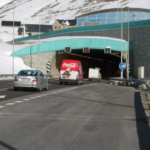
FIA Region I published “Policy position on road infrastructure and tunnel safety”. Many of the problems that road users face today are linked with poor maintenance of road infrastructure. Therefore, FIA Region I welcomes the European Commission’s plan to revise and merge the road infrastructure safety management Directive and the Directive on minimum safety requirements for tunnels. ![]()
![]()

FIA Region I published “Policy position on event data recorders”. Conducting road accident research and subsequent establishment of liability, in some instances, requires use of event data recorders (EDR) and data storage systems for automated driving (DSSA). The European Commission is evaluating whether EDRs should become standard equipment under the revision of the General Safety Regulation. FIA Region I sees no compelling case to mandate EDRs in all new vehicles. ![]()
![]()
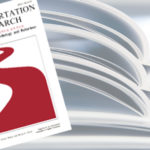
A paper titled “Comparative assessment of the behaviour of drivers with Mild Cognitive Impairment or Alzheimer’s disease in different road and traffic conditions” authored by Dimosthenis Pavlou, Eleonora Papadimitriou, Costas Antoniou, Panagiotis Papantoniou, George Yannis, John Golias and Sokratis G. Papageorgiou, is now published in Transportation Research Part F: Traffic Psychology and Behaviour, Volume 47, May 2017, pp. 122-131. The objective of this research was the analysis of the driving performance of drivers with Mild Cognitive Impairment (MCI) or Alzheimer’s disease (AD), in different road and traffic conditions, on the basis of a driving simulator experiment. The results of this research suggest that compensatory behaviours developed by impaired drivers are not adequate to counterbalance the direct effects of these cerebral diseases on driving skills. They also demonstrate that driving impairments increase as cognitive impairments become more severe (from MCI to AD). ![]()

NTUA Professor George Yannis has given an invited lecture at the School of Architecture, Building & Civil Engineering of Loughborough University on “Traffic and safety data analysis: from correlation to causation and policy support“. The Lecture focused on the various facets of road safety data, starting from the need for evidence based road safety policies, followed by key road safety analysis methods, the challenges of road safety measures’ assessment and the role of road user behaviour and concluding with an integrated road safety approach from data monitoring and analysis to policy support. A vivid discussion followed under the coordination of Loughborough University ITS Professor M.Quddus. ![]()

Safe Future Inland Transport Systems (SafeFITS), the Global Road Safety Model developed by NTUA for the United Nations – Economic Commission for Europe (UNECE) with the support of the International Road Transport Union (IRU) was presented by NTUA Professor George Yannis, at the Global Forum for Road Traffic Safety (WP.1) as part of its Seventy-fifth session in 19 September 2017, in order to showcase current developments and obtain feedback from national representatives. The SafeFITS tool is built around a statistical model based on historical road safety data and the relations between different road safety indicators. SafeFITS will enable Governments to identify the most appropriate road safety measures and policies to save even more lives. ![]()
![]()

A Diploma Thesis titled “Development of driver speed models based on detailed driving data from smartphone sensors” was presented by Christina Gonidi in July 2017, with the support and data from OSeven Telematics. A large data set recorded per second was used, containing information about the exact position of the vehicle, its acceleration and deceleration and the point where 100 drivers performed harsh manoeuvers or speed changes or when they used their mobile phone, etc. In order to analyze the available data, six statistical linear regression models forecasting driver average speed were developed: one general model, two models for the periods inside or outside risky hours and three models for each road type (urban, rural and highways). The results demonstrated a strong correlation between the average speed and the distance covered by the driver as well as driver accelerations and harsh changes. ![]()
![]()

United Nations launched the Report on Improving Global Road Safety, prepared by the World Health Organization in consultation with the United Nations regional commissions and other partners of the United Nations Road Safety Collaboration. This Report provides an account of activities undertaken and achievements attained by the global road safety community in pursuance of the objectives of the Decade of Action for Road Safety (2011 -2020) and of target 6 of Sustainable Development Goal 3 (halving road traffic deaths and injuries by 2020). A number of notable high-level events were held in the intervening period, including the activities of the EU Horizons 2020 Research project SaferAfrica – African-European Dialogue Platform on Road Safety with the active contribution of NTUA. The Report concludes with a number of recommendations to the Assembly for achieving the goals of the Decade of Action and Sustainable Development Goal target 3.6. ![]()

The Hellenic Institute of Transportation Engineers (HITE) and the Hellenic Institute of Transport (H.I.T.) co-organized the 8th International Congress on Transport Research (ICTR), which was held with great success on 27-29 September 2017, in Thessaloniki, Greece., with Scientific Committee Chair NTUA Prof. George Yannis. The spotlight theme of the 2017 Congress is: The Future of Transportation in Greece: A Vision for 2030. The ICTR has been a major event in the field of transportation research in Greece for the past 15 years with the active contribution of the research and academic community, the authorities as well as the public and private sector involved in the development and implementation of innovative projects in the field of transport. ![]()

On the occasion of the World Day of Alzheimer Disease (21/09/2017), the Department of Mental Disorders / Dementia of the Second Neurological Clinic of the University Hospital “Attikon” organized with great success an informational event on the latest developments in Alzheimer’s disease and other dementia diseases, in Attikon General Hospital, on 23 September 2017. The event included speeches by professors of the Athens University Medical School and specialized health professionals who answered questions in relation to the prevention, diagnosis, treatment and other topics related dementias. NTUA presentation concerned:
![]() Assessment of driving behaviour of patients with Dementia, Parkinson’s Disease and Mild Cognitive Impairment; Diagnostic and Predictive Indicators
Assessment of driving behaviour of patients with Dementia, Parkinson’s Disease and Mild Cognitive Impairment; Diagnostic and Predictive Indicators

The European Transport Safety Council (ETSC) has published two position papers on regulations on general safety and on pedestrians.
Position Paper: “Revision of the General Safety Regulation“: Within the context of the EU target to halve road deaths between 2010 and 2020, the forthcoming revision of the General Safety Regulation will require bold action to ensure that road deaths continue to fall, and that vehicle safety improvements are not limited to the wealthiest consumers or member states. ![]()
![]()
Position Paper: “Review of the Pedestrian Protection Regulation 78/2009“. ETSC welcomes the initiative of the European Commission to review the legislation on the protection of pedestrians and other vulnerable road users (VRUs). It is of paramount importance that the EU takes steps to improve the safety of this often neglected category of road users. ![]()
![]()

The 4th European Conference on Injury Prevention and Safety Promotion (EU-Safety-2017) took place in Amsterdam on September 21-22, 2017, organised by EuroSafe in collaboration with VeiligheidNL (Consumer Safety Institute). The conference builds on the many European Injury Prevention Conferences successfully organised over the past decades by EuroSafe and the success of the World Safety-2016 Conference (in Tampere, September last year) which was attended by the largest European contingent ever. This year the main theme of the conference is: “Safety Promotion in Action”. ![]()
![]()
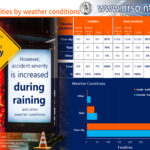
According to ELSTAT data, the majority of road accidents and fatalities in Greece occur during clear sky, both inside and outside built-up area. However, both road accidents and fatalities share outside built-up areas is much higher during rainy conditions than normal conditions of clear sky. Furthermore, accident severity is increased by 50% during raining especially inside built-up areas.![]()

A Diploma Thesis titled “Analysis of the effect of economic recession on road safety in Greece” was presented by Christos Batsos in September 2017. For this analysis, suitably processed road accident data during the period 2003-2014 have been exploited. It appears that the economic recession has led to a significant reduction in fatalities and serious injuries. The principal mechanisms bringing this decline about are the reduction of accidents with involvement of passenger cars, of young drivers and outside traffic junctions. These results indicate that apart from the decline of vehicle kilometers of travel, changes in road user behaviour might have contributed significantly to the overall improvement of road safety during the economic crisis. ![]()
![]()

VIAS Institute is the organisation that is taking over the role of Belgian Road Safety Institute (BRSI) after 30 years. The change of name is the final part of a process that was put in motion six years ago. Over the years, BRSI has built up a strong reputation in the area of road and traffic safety. BRSI have done so – based on research – by targeting the way in which they work on the changes to people’s behaviour out on the road. Improving road safety, along with mobility and safety in general: that is the aim of VIAS Institute, as a major Belgian Knowledge center. ![]()
![]()

The 6th Annual International Cycling Safety Conference was held with great success, for the first time outside of Europe, in Davis, California, USA, the “Bicycling Capital of the United States” at 21-22 September 2017, organised by the National Center for Sustainable Transportation (NCST) and the European initiators SWOV, TU Delft, TNO and Chalmers. The conference brought together a truly international group to discuss the most relevant topics on the safety of bicycling. ![]()
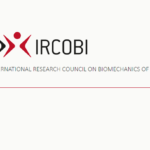
The 2017 International Research Council on the Biomechanics of Injury Europe Conference took place in Antwerp, Belgium, on 13-15 September 2017. The focus of IRCOBI is on the avoidance and reduction of the severity of traffic accidents, with special emphasis on advanced safety technologies and the biomechanics of injury. ![]()

A Diploma Thesis titled “Modelling mobile phone use impact on driver behaviour through the exploitation of data from smartphone sensors” was presented by Anastasia Argyropoulou in July 2017, with the support and data from OSeven Telematics. The aim of this Diploma Thesis was to examine and model the impact of mobile phone use on driver behaviour through the exploitation of data from smartphone sensors. To achieve this objective, data collected from 100 drivers who participated at a naturalistic driving experiment for four months were analysed through statistical modelling. The application of the models revealed that the factors affecting the harsh events are five, with the average driving speed being the main one, while the factors affecting the possibility of using the mobile phone while driving are six, with the average angular speed being the main one. ![]()
![]()
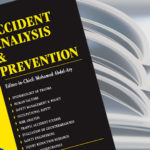
A paper titled “Meta-analysis of the effect of road work zones on crash occurrence” authored by Athanasios Theofilatos, Apostolos Ziakopoulos, Eleonora Papadimitriou, George Yannis, and Konstandinos Diamandouros is now published in Accident Analysis and Prevention. This paper presents formal meta-analyses of studies that have estimated the relationship between the number of crashes and work zone duration and length, in order to provide overall estimates of those effects on crash frequencies. All studies presented in this paper are crash prediction models with similar specifications. Meta-regression findings indicate that the main factors influencing the overall estimates of the beta coefficients are study year and region for work zone duration and study year and model specification for work zone length. ![]()
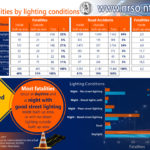
According to the latest ELSTAT data for 2015, most road fatalities in Greece occur at daytime and at night with good street lighting inside built-up area, or with no street lighting outside built-up area. Accident severity is increased 3 to 7 times more at night with no street lighting or no street lighting, but also at night accidents outside built-up areas. ![]()
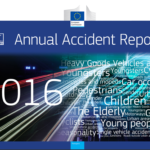
The Road Safety Unit of DG Move of the European Commission published recently the 2016 Edition of the EU Annual Road Accidents Report ![]() and the respective Infographics
and the respective Infographics ![]() with the active contribution of NTUA, KFV and ERF. The EU Annual Road Accidents Report is based on most recent disaggregate data for all EU countries from the CARE Database of the European Commission and consist of summary and cross-country comparative tables, figures and maps on key road safety topics for which data comparable across the EU counties are available.
with the active contribution of NTUA, KFV and ERF. The EU Annual Road Accidents Report is based on most recent disaggregate data for all EU countries from the CARE Database of the European Commission and consist of summary and cross-country comparative tables, figures and maps on key road safety topics for which data comparable across the EU counties are available.
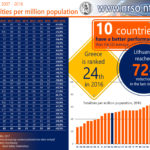
According to the EU road fatalities infographic of the NTUA Road Safety Observatory, ten countries have a better performance than the EU average, namely Sweden, UK, Netherlands, Denmark, Spain, Germany, Ireland, Finland, Austria, and Slovakia. Greece is ranked 24th in 2016. Lithuania demonstrated the highest road fatalities rate reduction (72%) in the last decade, followed by Estonia (63%) and Latvia (58%), whereas the EU average 10-year reduction is 42,5% and for Greece is 48%. ![]()

The Vehicle and Traffic Safety Centre at Chalmers (SAFER) has recently launched its new website, aiming to further communicate worldwide SAFER research findings and presenting all projects, publications, news, seminars and other activities. SAFER is the open innovation arena with the contribution of Volvo, VTI, Chalmers University and other partners, where researchers and expertise work together to create safe mobility. Its traffic safety approach covers people, vehicles and the infrastructure – and together they contribute to safer road transports and smarter, more sustainable cities. ![]()
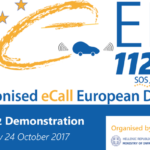
The Institute of Communication & Computer Systems and the Hellenic Ministry of Infrastructure & Transport are organising a workshop and demonstration of I_HeERO – “Infrastructure Harmonised eCall European Pilot” implementation in Greece, that will be held on Tuesday, 24 October 2017 at the Hellenic Ministry of Infrastructure and Transport facilities, in Athens, Greece. The European project I_HeERO: Deployment pilot project of EU-wide eCall is aimed at the preparation of Public Safety Answering Points (PSAPs) in the participant Member States (Bulgaria, Cyprus, the Czech Republic, Finland, Germany, Greece, Ireland, Italy, Portugal, Romania and Slovenia) for the deployment of eCall based on 112 as reference implementations. The event is expected to attract a wide variety of participants from private and public institutions, local authorities, academic and research communities, manufacturers, road transport professionals and end users associations. ![]()
![]()

The World Road Association-PIARC recently published a Report entitled: “Advanced technology for data collection and information to users and operators”. The Report provides brief summaries of projects from around the world, presented in the form of use cases that are representative of innovative ways of collecting, distributing, and making use of mobile data to assist transportation officials in their winter maintenance operations and to provide information to the travelling public. The use cases or case studies were selected because it is the belief of the authors that, when deployed, any of the technologies described will have a positive impact on transportation safety, mobility, the environment, and/or more efficient use of human and material resources needed to carry out their winter maintenance duties. ![]()

The World Road Association (PIARC)’s Technical Committee D.5 “Road Tunnel Operations”, the French PIARC Committee and the French Center for Tunnel Studies (CETU) are pleased to announce the First International Conference on Road Tunnel Operations and Safety, which will be held in Lyon, France on 3-5 October 2018. It will be of great relevance for owners, operators, designers, representatives of fire departments, suppliers, installers. PIARC’s Technical Committee on Road Tunnel Operations is recognised as a reference technical body. It brings together almost 140 people worldwide and is very active on the subject of the operation and safety of road tunnels. In recent years, it has published 8 technical reports and developed an on-line reference manual. ![]()

The Newsletter of the African-European Dialogue Platform on Road Safety (SaferAfrica) has been recently issued with the active contribution of NTUA. This Newsletter is the official, semi-annual newsletter of the SaferAfrica Project funded within Horizon 2020 programme of the European Commission, aiming to create favourable conditions and opportunities for the effective implementation of actions for road safety and traffic management in African countries by setting up a Dialogue Platform between Africa and Europe. The first issue includes a) New Network of Regional Road Safety Observatories by World Bank, OECD and FIA, b) Towards the Pan-African Road Safety Knowledge and Data Centre, c) Data-driven road safety under construction in Cameroon. ![]()
http://www.saferafrica.eu/media/1699/01_newsletter-saferafrica_july-2017.pdf

The renown international scientific journal Advances in Transportation Studies (ATS) has launched its new website. The new ATS website has been redesigned for a user friendly and appealing web navigation offering to the Scientific Community a quick access to all scientific results published. ![]()














































































































































































